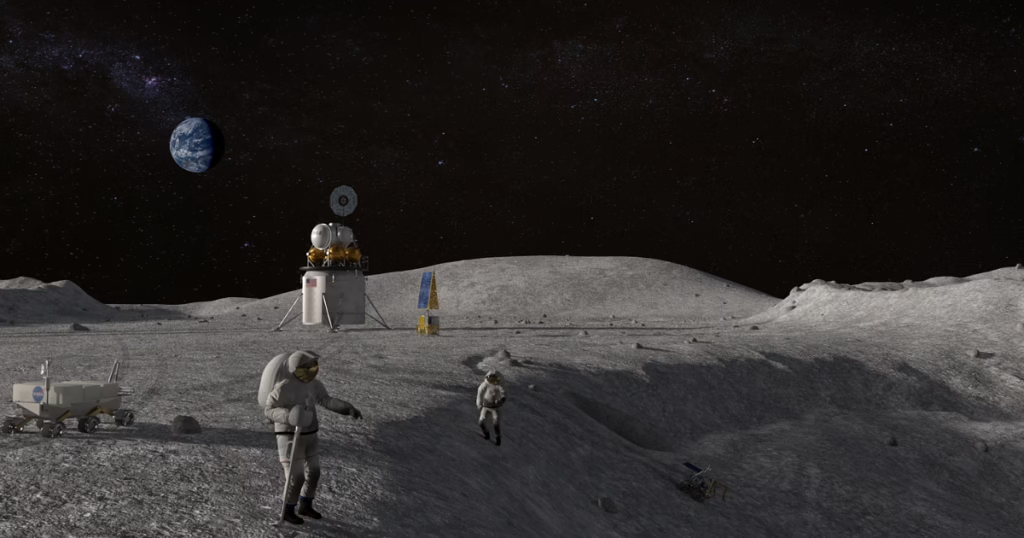The Artemis Mission is NASA’s ambitious program to return humans to the Moon, with plans to establish a sustainable lunar presence and eventually prepare for Mars exploration. This initiative, named after the Greek goddess Artemis, the twin sister of Apollo, aims to build on the legacy of the Apollo missions while leveraging modern technology for deeper space exploration.
What is the Artemis Mission?
The Artemis Mission is a multi-phase space exploration program led by NASA, in collaboration with international and private partners. The mission’s primary goals include:
- Landing the first woman and the first person of color on the Moon.
- Establishing a sustainable lunar base for long-term exploration.
- Using the Moon as a stepping stone for human missions to Mars.
- Advancing space technology and research.
Why is NASA Returning to the Moon?
NASA’s decision to return to the Moon is driven by several factors:
- Scientific Research – The Moon provides a unique opportunity to study planetary formation and the solar system’s history.
- Technology Advancement – New exploration technologies will be tested on the Moon before being used for Mars missions.
- International Collaboration – The Artemis program includes global partnerships with agencies like ESA (European Space Agency) and JAXA (Japan Aerospace Exploration Agency).
- Economic Opportunities – Lunar resources such as water ice could support future space missions and industries.
- Space Exploration Gateway – Establishing a presence on the Moon will serve as a launchpad for deeper space exploration.
Artemis Program Timeline and Key Missions

The Artemis program is divided into several phases:
Artemis I (Uncrewed Mission) – 2022
- The first flight of the Space Launch System (SLS) and Orion spacecraft.
- Uncrewed test mission to orbit the Moon and return to Earth.
- Tested spacecraft safety and deep-space travel capabilities.
Artemis II (Crewed Mission) – 2024
- The first crewed flight around the Moon in over 50 years.
- Astronauts will orbit the Moon but will not land.
- The mission will test life-support systems and deep-space travel for humans.
Artemis III (Moon Landing) – 2025
- The first human landing on the Moon since Apollo 17 (1972).
- Two astronauts will explore the Moon’s surface for approximately one week.
- The mission will use the Human Landing System (HLS) developed by SpaceX.
Artemis IV & Beyond – 2026 and Beyond
- Establishing the Lunar Gateway, a space station orbiting the Moon.
- Additional lunar landings to build infrastructure for long-term exploration.
- Preparing for human missions to Mars.
The Role of SpaceX and Other Private Partners
NASA has partnered with private companies such as SpaceX, Blue Origin, and Lockheed Martin to develop technology for Artemis. SpaceX’s Starship will serve as the Human Landing System (HLS), transporting astronauts to and from the Moon’s surface.
Other companies are working on lunar habitats, space suits, and transportation systems to ensure a sustainable human presence on the Moon.
Challenges of the Artemis Mission
Despite its ambitious goals, the Artemis Mission faces several challenges:
- Budget Constraints – Developing new technology and sustaining lunar exploration is costly.
- Technological Hurdles – Ensuring safety and efficiency in deep-space travel is complex.
- Political and Policy Changes – Space exploration policies can shift with changes in government leadership.
- Space Radiation Exposure – Long-duration missions pose health risks to astronauts.
- Logistics and Infrastructure – Building a sustainable lunar base requires new systems for power, transportation, and communication.
The Future of Lunar Exploration
The Artemis program is just the beginning of a new era in space exploration. NASA envisions a future where lunar bases support long-term missions, and astronauts use the Moon as a gateway to Mars and beyond. The lessons learned from Artemis will shape the next steps in interplanetary travel.
Potential Lunar Base
A key aspect of the Artemis program is the development of a permanent lunar base. This base will serve as a:
- Research hub for studying the Moon’s environment.
- Testing ground for new space technologies.
- Launch site for deep-space missions.
Scientists are particularly interested in extracting and utilizing lunar resources, such as water ice, to produce oxygen and fuel. This would significantly reduce the need to transport supplies from Earth, making space travel more cost-effective.
Artemis and Mars Exploration
NASA’s ultimate goal is Mars. The Moon provides an ideal testing ground for systems that will be used for Martian exploration. Artemis missions will:
- Test long-duration space travel techniques.
- Develop life-support systems for deep-space habitats.
- Perfect in-situ resource utilization (ISRU) methods.
The first human landing on Mars is expected in the 2030s, with Artemis laying the groundwork for that historic step.
Conclusion
The Artemis Mission represents America’s renewed commitment to space exploration, innovation, and scientific discovery. By returning to the Moon, NASA and its partners are laying the groundwork for the future of human space travel. As technology advances and international collaboration grows, the dream of exploring Mars and beyond becomes more achievable. The Artemis Mission is not just about revisiting the Moon—it’s about shaping the future of space exploration for generations to come.
Also Read : The Future of Commercial Space Travel in America






